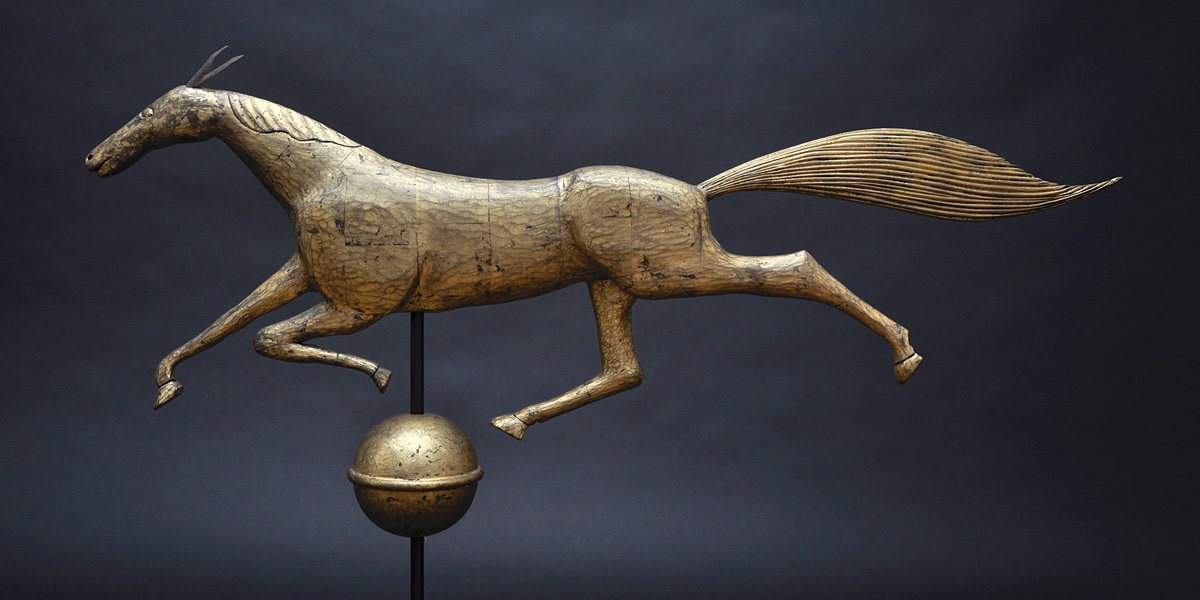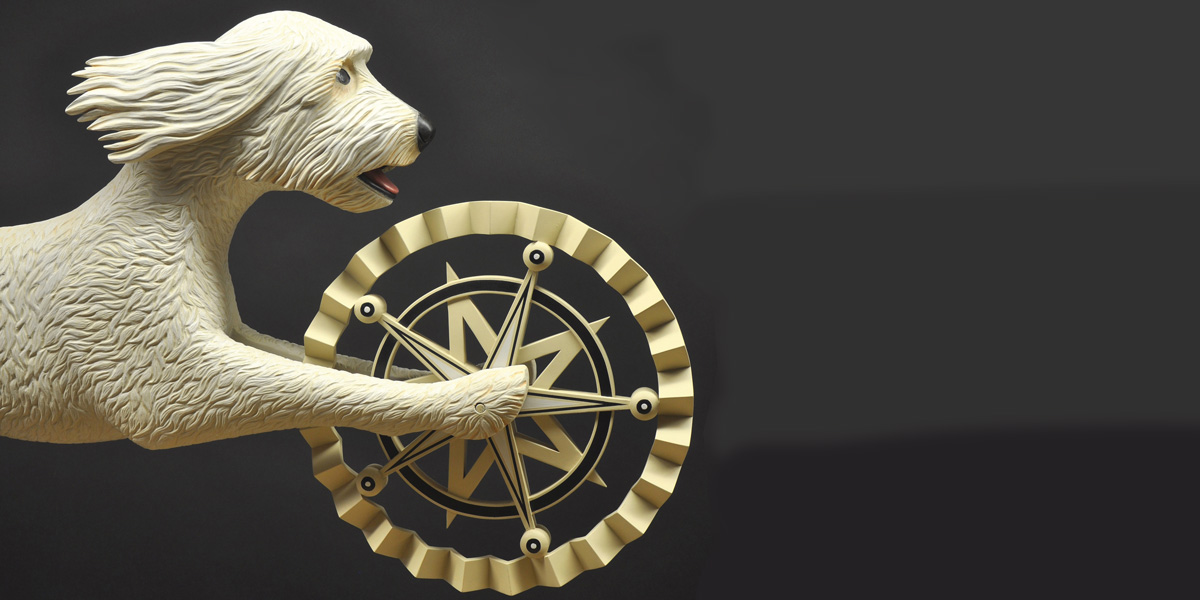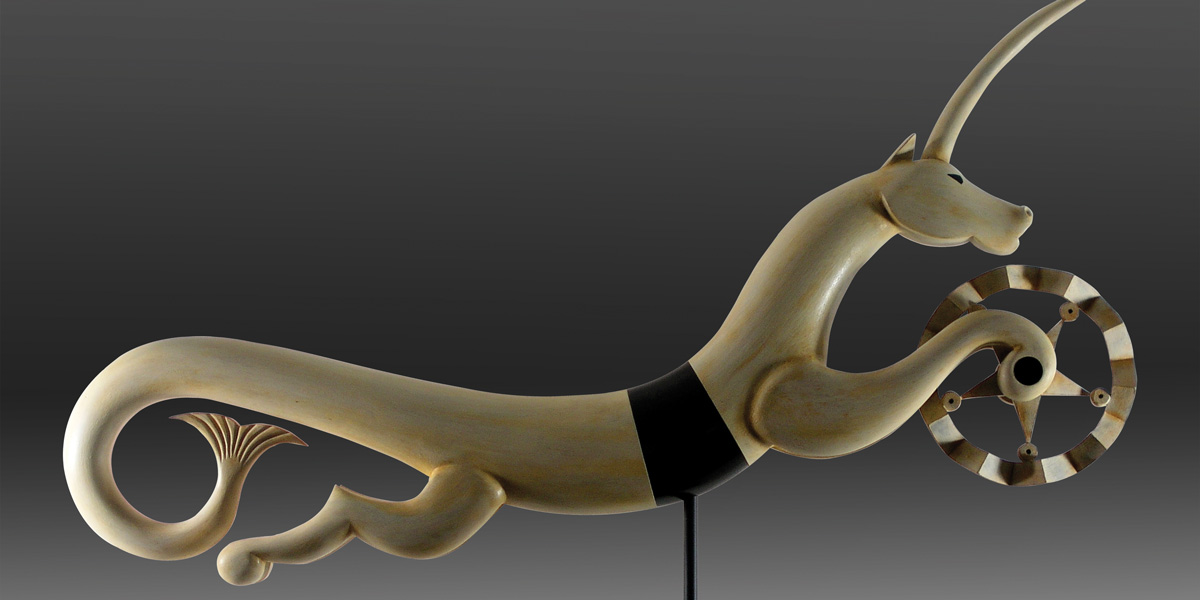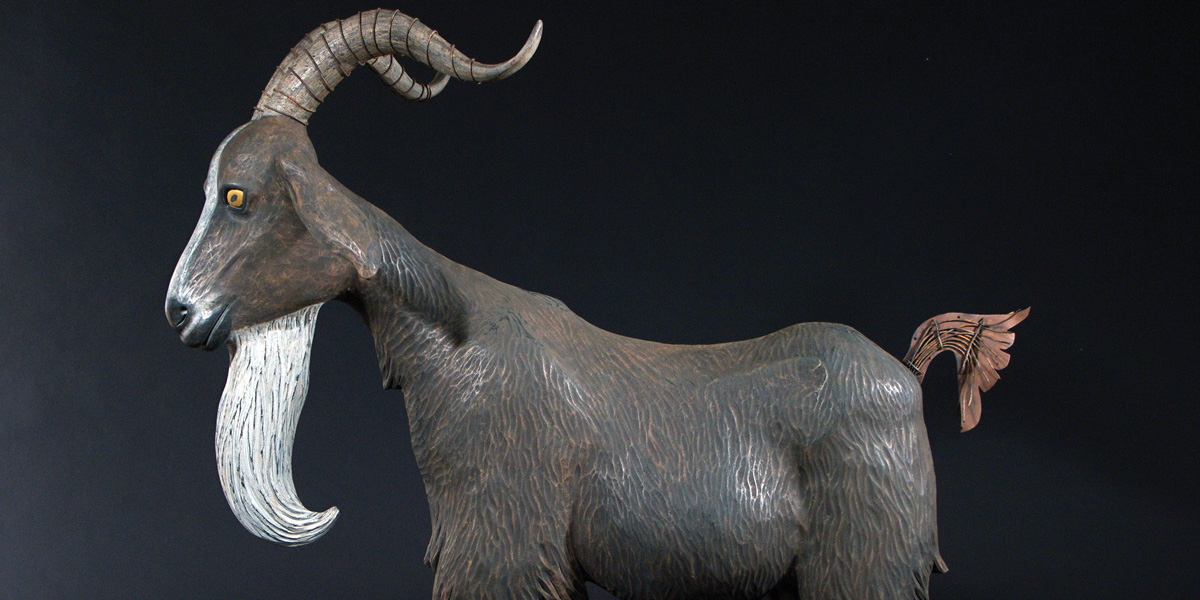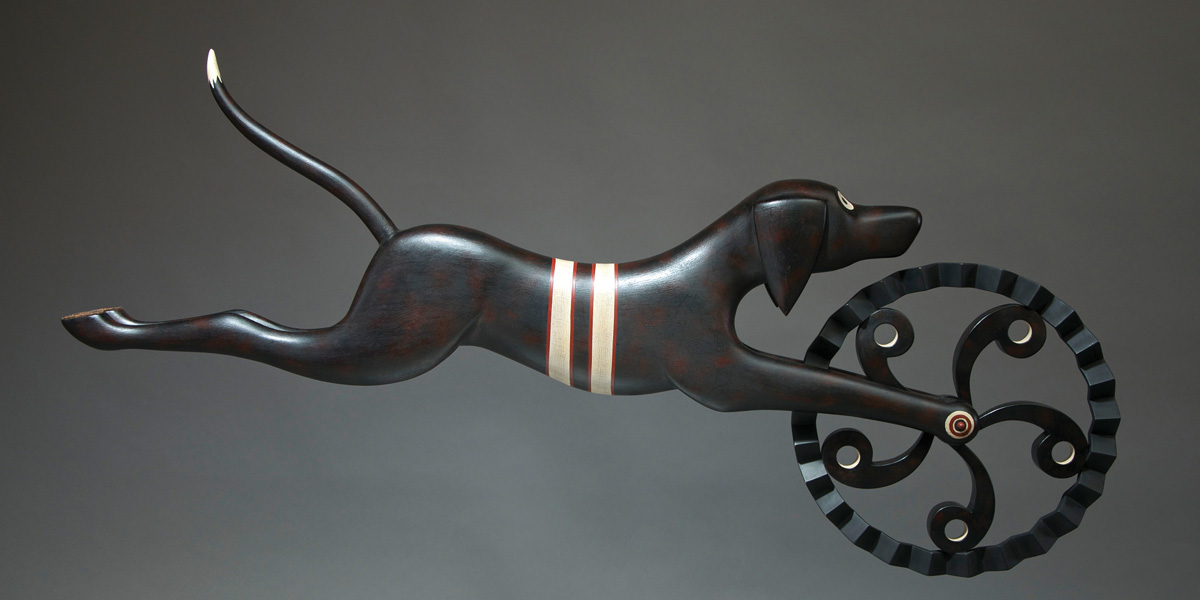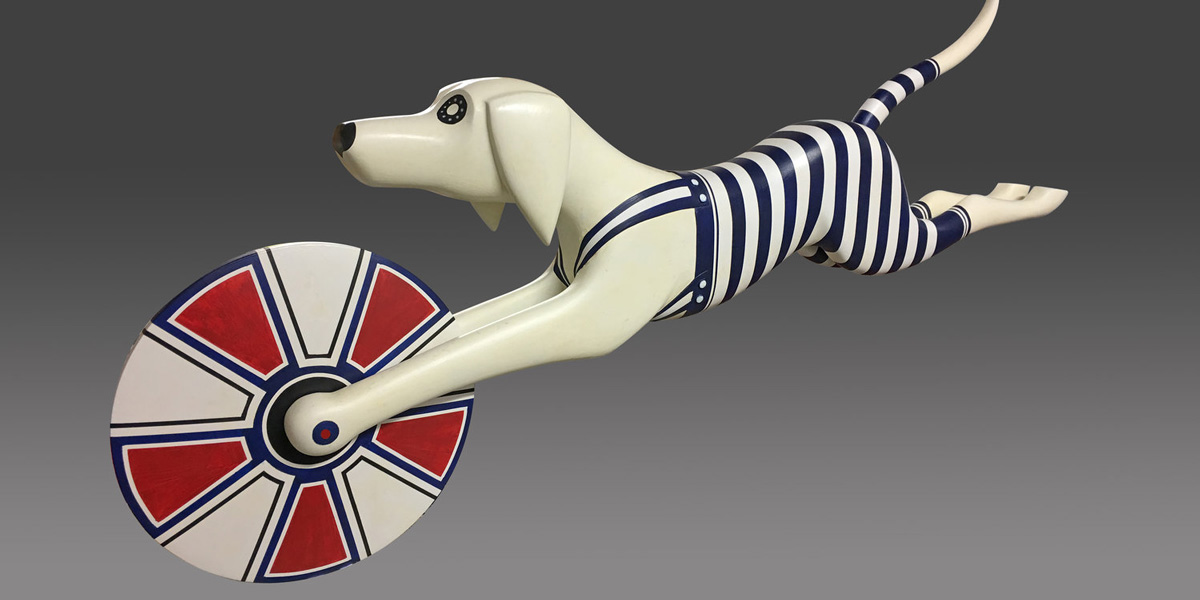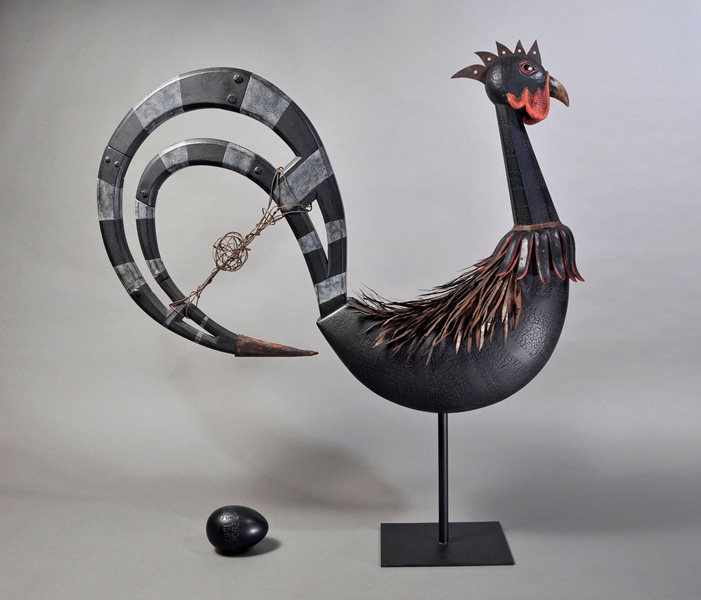rt
Mark A. Perry creates contemporary works influenced by his passion for early American folk masterpieces.
As an artist, is your mission to adhere to the style of 17th- and 18th-century folk-art carvings or to modernize and personalize these centuries-old designs?
Originally my mission was to replicate 17th- and 18th-century folk art masterpieces. I am a self-taught artist. That process involved mirroring the earlier works, recreating them, and, in that process, learning something of the artists’ thinking process and perspective. Today I create my own works inspired by some aspect of American folk art. For example, Hero, the Dalmatian carving, was inspired by both early carousel carvings and scrimshaw pie crimpers of the 19th century. The result is an iconic firehouse mascot turned into something of a superhero.
What is it about American folk art sculpture that resonates with you?
American folk art sculpture, as diverse as that category is, has a rich soulfulness and spirit that is unmistakable. In so many cases—seemingly unintended by the maker— happenstance and naiveté meld to form works that are often primitive yet remarkably beautiful. I was immediately drawn to this form of art, where chance, time, and weather play such a role.
Your journey as an artist took a 10-year break from carving. What factors made you realize this was going to be a career?
I was living on Nantucket Island when I first began carving in wood. Being on the island at that time helped to accelerate my art career. Like much in folk art, it all started by accident. Nantucket has a rich history of folk-art traditions, and there is a great appreciation for it there. I could not have a picked a better place to start my very unexpected career.
Do you prefer any particular woods?
I carve almost exclusively in basswood that comes from the Linden tree. It is a well-known wood to carvers and is prized for its straight and clear grain. Since my work is finished in either paint and or gold palladium leaf, I have had little need to carve in other woods that could be left with a natural finish.
Did living in Nantucket and other coastal areas influence the subjects of your sculptures?
Yes, very much so. My most popular carvings are the crimpers. While living on Nantucket, I was impressed with the wide range of objects created by 19th-century whaling men out of whale ivory. This is called scrimshaw. The early crimpers, or jagging wheels as they are often called, were made aboard ships during a journey that would often last several years. Many of the prized scrimshaw works, as decorative as they were, are actually tools for the kitchen. Pie crimpers crimp the edge of a pie, connecting the top and bottom crust around the edge. The whalers would make them for their wives or girlfriends back home. I adopted the style, modernized it, and enlarged the concept many times to create works that are devoid of any utilitarian meaning.
There is a great carving heritage around the sea. I was also fascinated by ship figureheads and sternboards. I’ve had the privilege of restoring 19th-century examples to their former glory, while keeping their sense of age intact.
Why is this style of folk art so sought after by collectors?
People collect what speaks to them, what moves their spirit in some way, and nurtures their soul. My works are relatable and approachable—different yet familiar. For example, my dog crimpers bring the greatest smiles to people’s faces. Adults and children are fascinated by them. I believe that as our world becomes more mechanized, where computers can now generate almost any physical object, there is an appreciation of things made by hand.
Your pieces, while steeped in tradition, have a timeless, modern, and even whimsical feel.
There is something of a fusion that takes place in my work, where past, present, and future are combined with a dash of fun. I have a great appreciation for modern art and have worked in that realm. That, combined with a keen eye toward folk-art traditions, yields a very pleasing result. It seems that the terms “contemporary folk art” or “sophisticated folk art” is how people see my work.
How much time goes into your pieces?
Each of my works is handcrafted solely by me. The very nature of working alone and taking each piece through all the steps from beginning to end is quite time consuming. The concept stages, along with designing, template making, roughing, carving, and finishing, add up to sculptures that can take weeks or months to create. I carve most things out of solid blocks of wood in what is called the subtractive method, as opposed to working with clay, which would be additive.
What are your most-requested works?
My crimpers are my most-requested commissions. Most of these are in the form of dogs, which I can customize for the client in terms of size, type of dog, and wheel design. Like most things in my art career, one thing has led to another. I first began making a generic dog design while living on Nantucket, where I think the ratio of dogs to humans is 3-to-1. Since then, requests have continued to come in to have dogs carved in the likeness of my clients’ beloved pets. I just recently completed a poodle carving for a home in Maryland. The home was built in the style of modern barn. The owners, who have two standard Poodles, wanted their poodle crimper to meld with the style and architecture of the house. To achieve this, I created a crimping wheel using various elements of vintage tractor wheels and seats. Other crimpers have had carved dog bones as spokes in the wheel, and one particularly fun project for a Washington, D.C., area symphony conductor had conductor batons incorporated into the wheel.
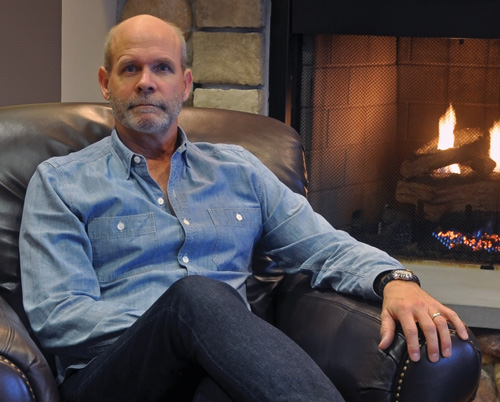 Mark A. Perry’s artistic focus is the point where past and present unite to create powerful, synergistic works that become, as he is often told, sophisticated folk art. Perry began his career by the sea on Nantucket Island and now lives and works in Westerly, Rhode Island. His sculptures can be found in public and privates collections from Nantucket to Santa Barbara, California.
Mark A. Perry’s artistic focus is the point where past and present unite to create powerful, synergistic works that become, as he is often told, sophisticated folk art. Perry began his career by the sea on Nantucket Island and now lives and works in Westerly, Rhode Island. His sculptures can be found in public and privates collections from Nantucket to Santa Barbara, California.

